Like so many places around the globe, food is at the heart of Italian culture. If you want to see the real Italy, you need to dig into the customs and traditions surrounding Italian cuisine. And to do that—you’ve got to sample all the food.
Oh darn. 😉
However, “Italian food” is a bit of a misnomer. In reality, wherever you go in Italy, you will find distinctions in both food and traditions. So Italian food in Venice completely differs from what you’ll find in say Sicily.
Typical dishes and cultural practices actually differ quite a bit from Northern to Southern Italy.
A major reason for the unique food in each region is the difference in climate and seasonality. Italy is very adamant about it’s DOP (Denominazione di Origine Protetta)—which translates to Protected Designation of Origin; essentially they ensure and protect that products are locally grown and packaged.
Wondering how locals eat and what the food culture is like? I’m dishing up the goods!
Here is my ultimate guide to eating like a local in Italy. Mangia bene!

Rome
Coffee Culture
Italian coffee culture is actually quite unique. You might be used to ordering your Starbucks grande latte “to-go” in the afternoon. There are a few “non-Italian” things about this particular order.
The first thing to know is that milk-based coffees are generally only consumed in the morning with breakfast. There are a couple of theories about why this is the case…
Some people say it is because drinking milk after eating will cause a stomachache. Others say that it is just based on the old tradition of drinking milk as soon as the milkman delivers it so that it doesn’t spoil. Whatever the case, most people wouldn’t dare to order a cappuccino in the afternoon.
Literally, you’ll get the side-eye.
Second, baristas will expect you to drink your coffee at the bar or your table. That means no “to-go.” That said, you will find that most coffees are far smaller than you might be used to, so it’s easy to drink them in a few sips.
Helpful Tip:
Foods You’ll Find All Over Italy
A typical breakfast in Italy consists of brioche (which is actually a croissant) and a coffee (typically a cappuccino). Other foods you’ll DEFINITELY find wherever you roam? Gelato on gelato, cheese, grappa and limoncello, and copious amounts of wine. It’s very, very easy to eat and drink yourself silly!
But hey, when in Rome! 😉
(Speaking of Rome, check out this amazing food tour in Rome if you’re planning a visit!)
Read More: Tips for Visiting the Prosecco Vending Machine in Italy
Regional Specialties
Northern Italy: Fish, Pasta (such as Vongole), Tiramisu (it is the birthplace, after all!), and Prosecco (the birthplace of Spritz Aperol)
Southern Italy: Pasta, Pizza (the birthplace being Napoli), Caponata, and Eggplant Parmigiana
Sardinia: Suckling Pig (as in a large roast)
Sicily: Arancini, Caponata, and Canoli
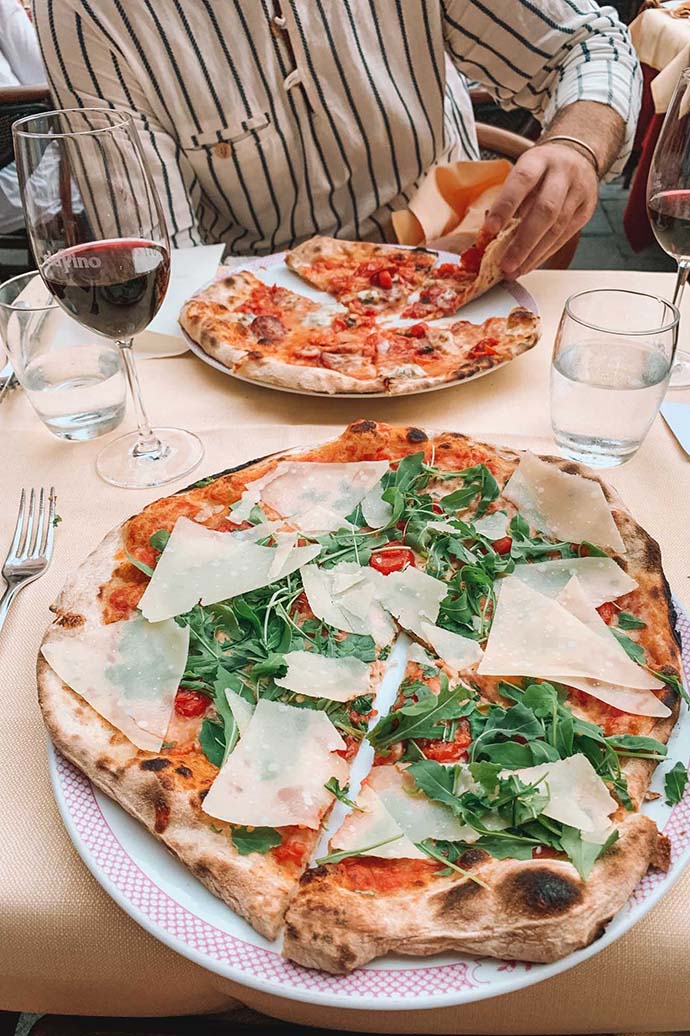
Helpful Tip:
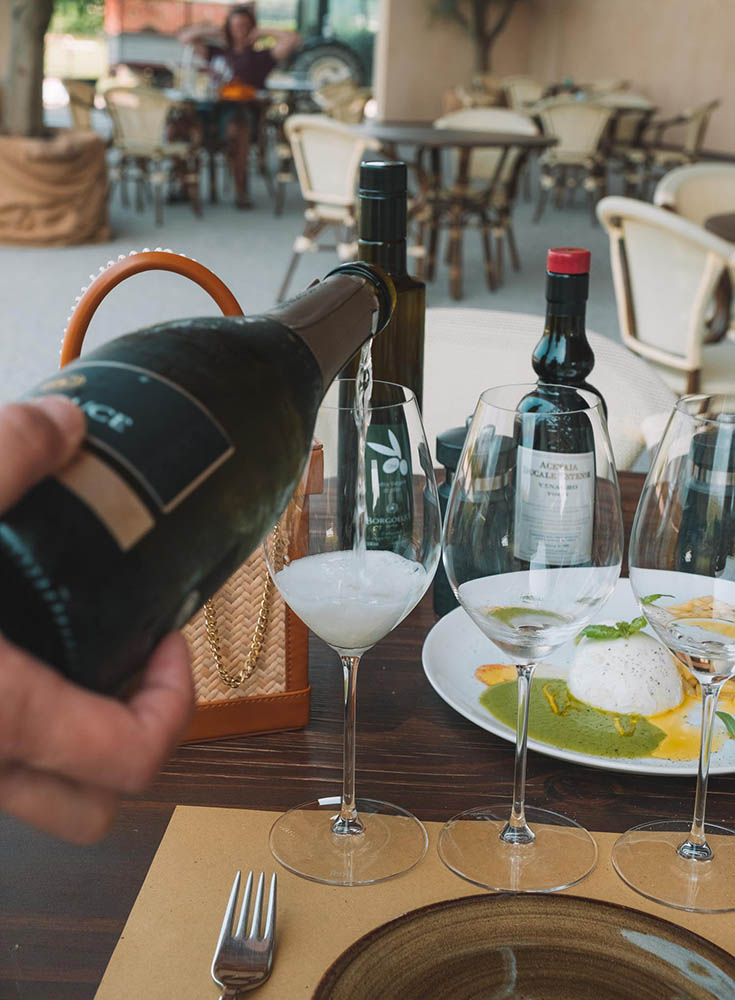
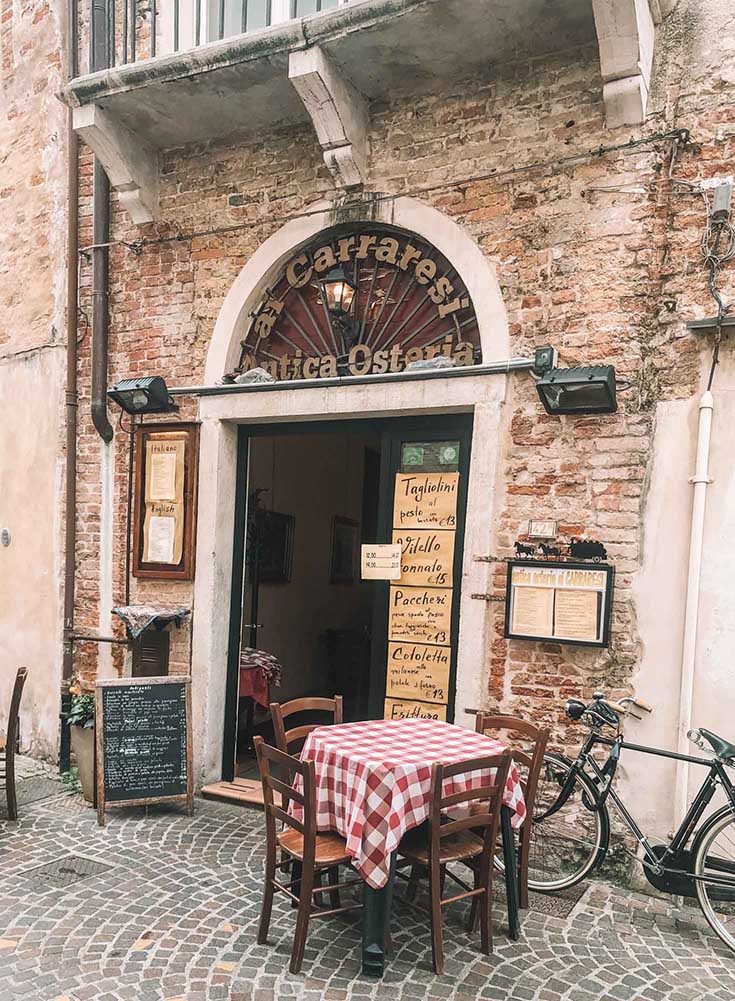
About the Meal
As soon as you sit down, the server will ask if you’d like acqua naturale (still water) or frizzante (carbonated) water. You will find that while water is served cold, you typically have to ask for ice.
Wine is also a common dinner drink and that will be the next question! You’ll usually order by the glass or bottle, but you’ll often also see servings of 1-liter or 0.5-liters in rosso (red) or bianco (white).
Whatever drink you opt for, whether it is soda, water or wine, don’t expect free refills.
Meal Courses
When it comes to ordering dinner, you will find several options. It is important to keep in mind that Italian meals are rarely just one big dish. Instead, locals tend to order their meals in courses—many, many courses! Here’s a typical breakdown:
Aperitivo: This will be your first few sips and bites to “prepare your stomach for a meal.” Think Spritz Aperol along with a tapa like olives or meatballs.
Antipasti: Your starter. Often it’ll be a small plate of meat and cheese.
Primi: This is the first course of hot food. Traditionally it is a vegetarian pasta dish.
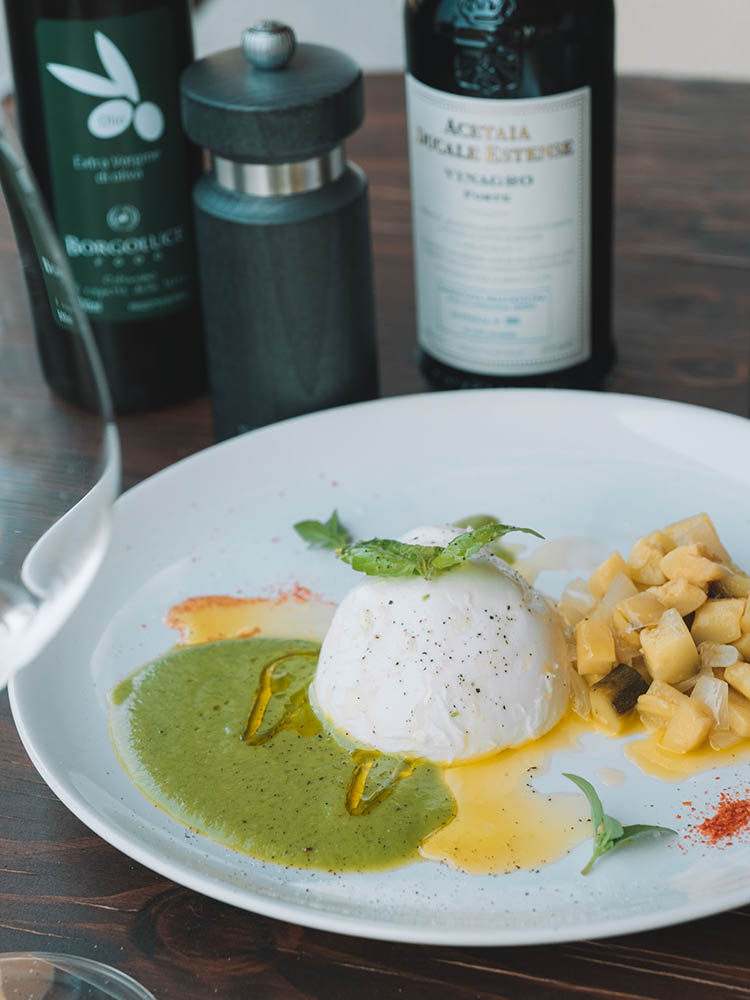
Secondi: In your second course, this normally consists of meat or seafood.
Contorini: This is essentially a side dish that will be served with your second course. It’s usually vegetables to go with the meat.
Insalata: After you eat your second course, you might opt for a small salad.
Formaggi E Frutta: Hello, cheese and fruit combos!
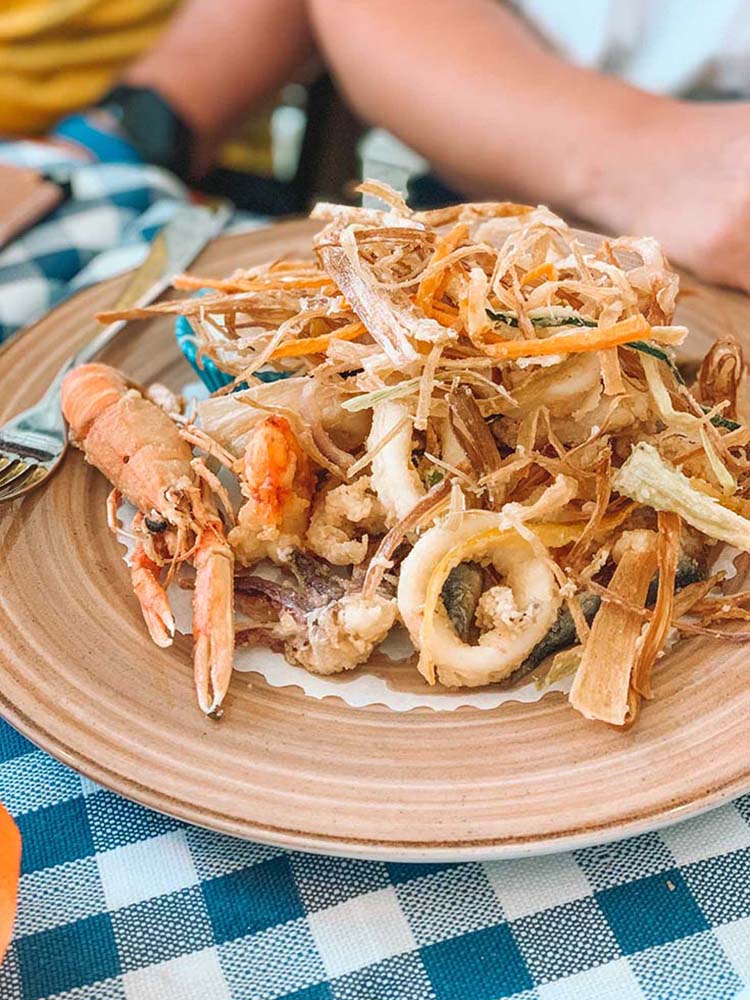
Dolce: Did you save room for dessert after all that?
Caffe: Italians often end their meals with a shot of espresso.
Digestivo: Certain alcoholic drinks like limoncello, amaro, and grappa are believed to help with digestion.
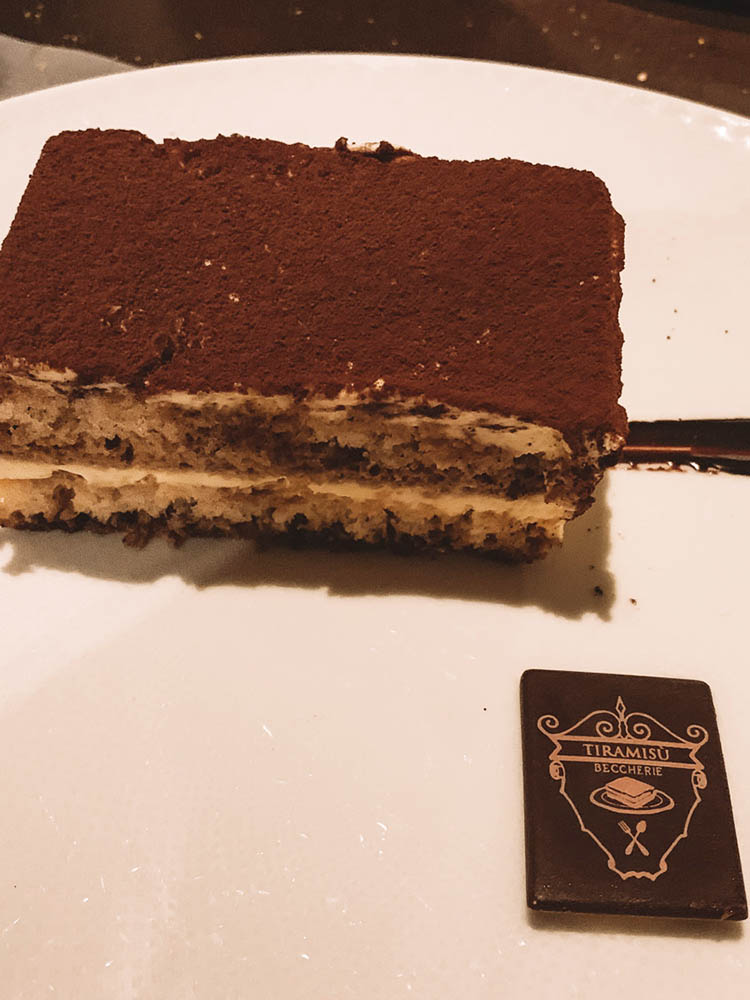
Helpful Tip:
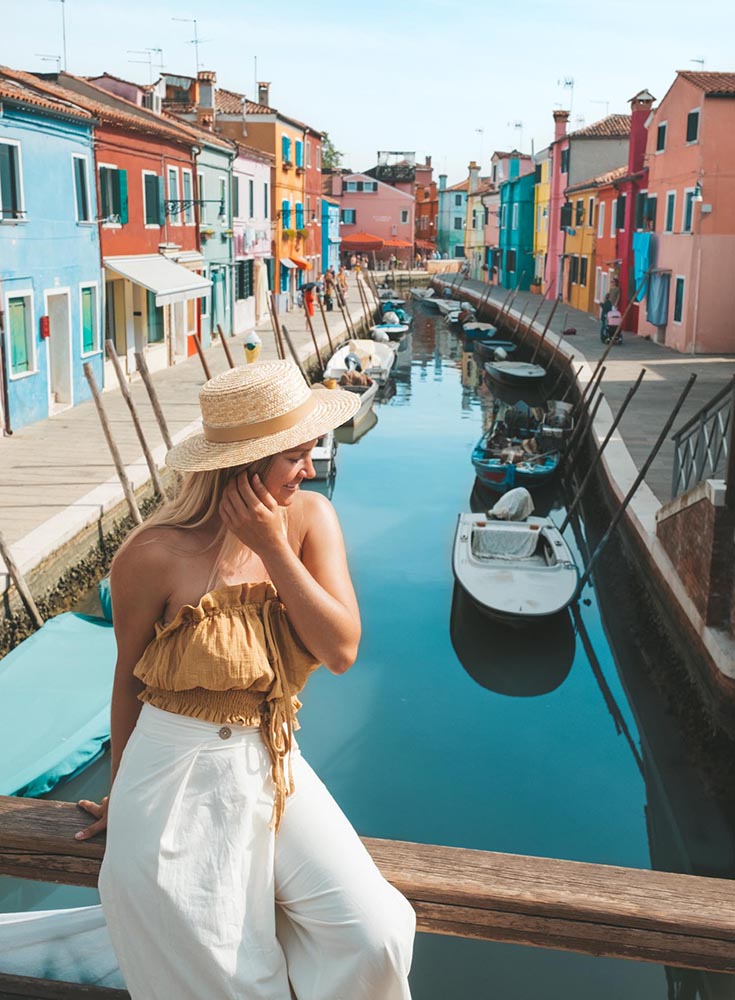
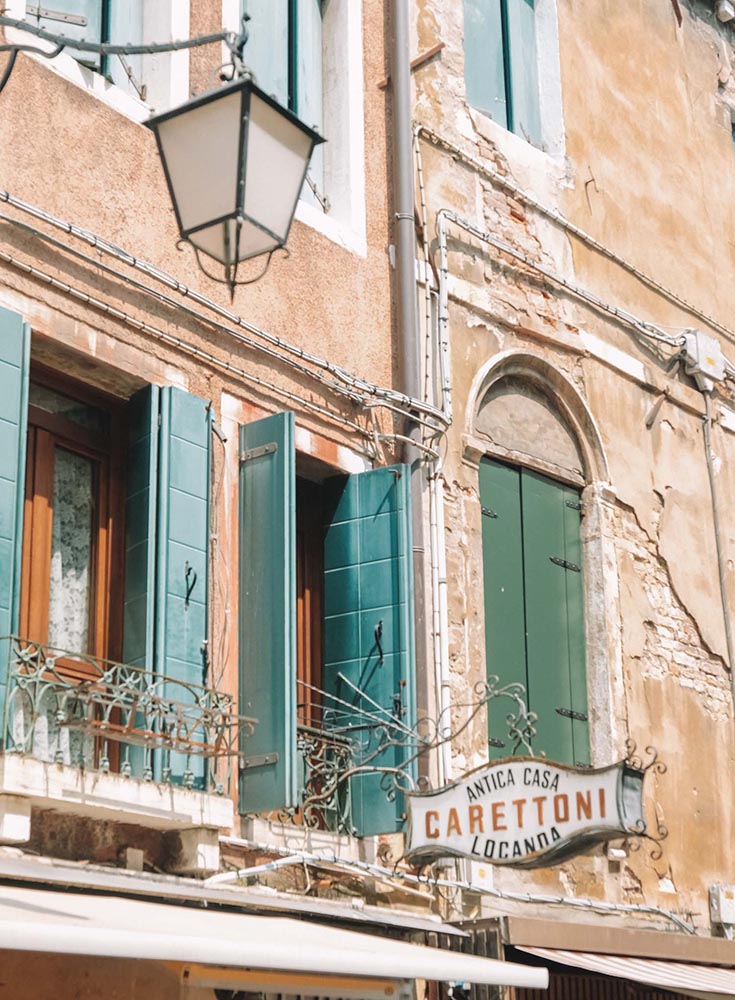
Etiquette for Dining at Someone’s Home
If you are lucky enough to be invited into an Italian home for dinner, there are a few minor pieces of etiquette to consider.
Generally speaking, it is best to eat at a similar pace as your host. Finishing everything on your plate is basically a request for seconds. Meanwhile leaving a lot of food on your plate is considered a sign you didn’t like the food.
Sunday lunches are an important meal on every Italian’s calendar. If you receive an invite, bring a dessert. Anything from the local bakery or a tub of gelato to share with everyone is greatly appreciated.

Treviso
Tipping + The Bill
There are no expectations for tipping. Locals will typically just leave a bit of change to even out their bill but nothing more (e.g. leaving €40 for a bill of €37.85). If you are at a high-end restaurant, you *might* leave ten percent to acknowledge truly exceptional service, but normally, service will already be included and disclosed on the menu or receipt.
One major thing to note is that restaurants will not bring you the bill when you’ve finished your meal. You must ask or you will be there all night. I actually really love this as it’s ingrained in the culture to take your time and savor the meal and the company—there’s no need to rush.
You can ask for the bill by saying, “Il conto, per favore.”
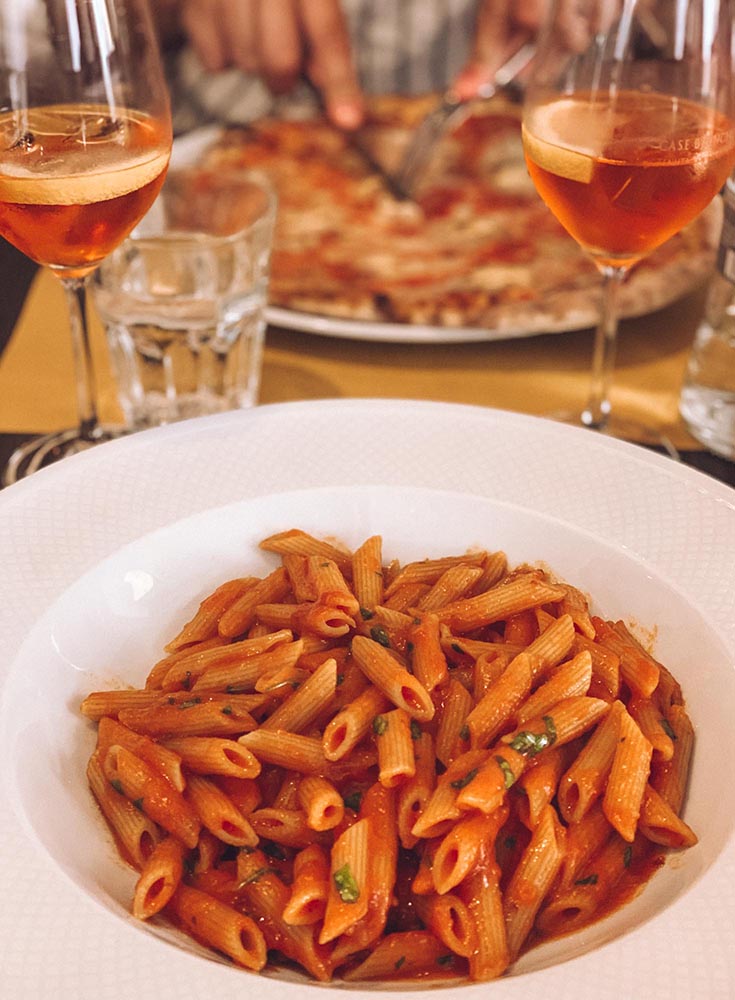
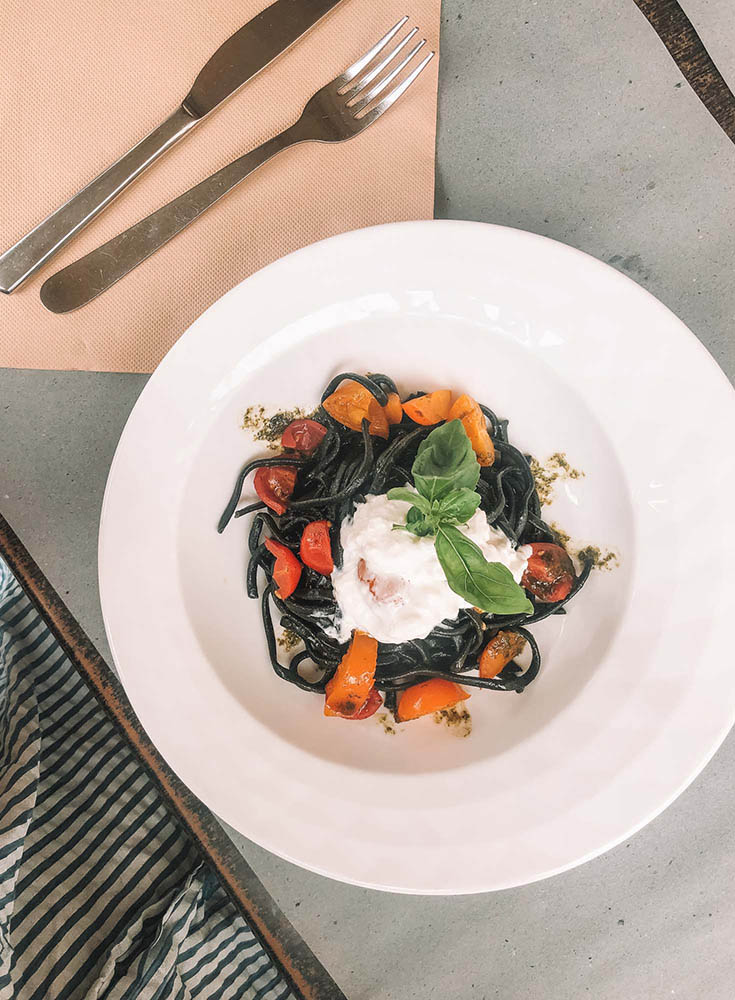
Ordering Pasta
You will find that traditional Italian pasta dishes do not include meat (unless you’re in the north, where fish is common). Spaghetti and meatballs will be hard to come by, as are fettuccine alfredo and chicken parmesan.
There are also standardized combinations of pasta and sauce. While we might just put penne or farfalle with whatever sauce we have on hand, Italians would have set combinations.
Check out this interesting breakdown of the pairings!
Ready to say ciao? Here is everything you need to know before your first trip to Italy.
So, what Italian foods are you wanting to try? Allllll of them? I don’t blame you! Let me know your thoughts about Italian food culture below!
Rome Food Tour & Pizza Making
While visiting Rome I joined Walks of Italy for a Rome food tour + pizza making, which, if you ask me, is the best way to discover a city!
Read More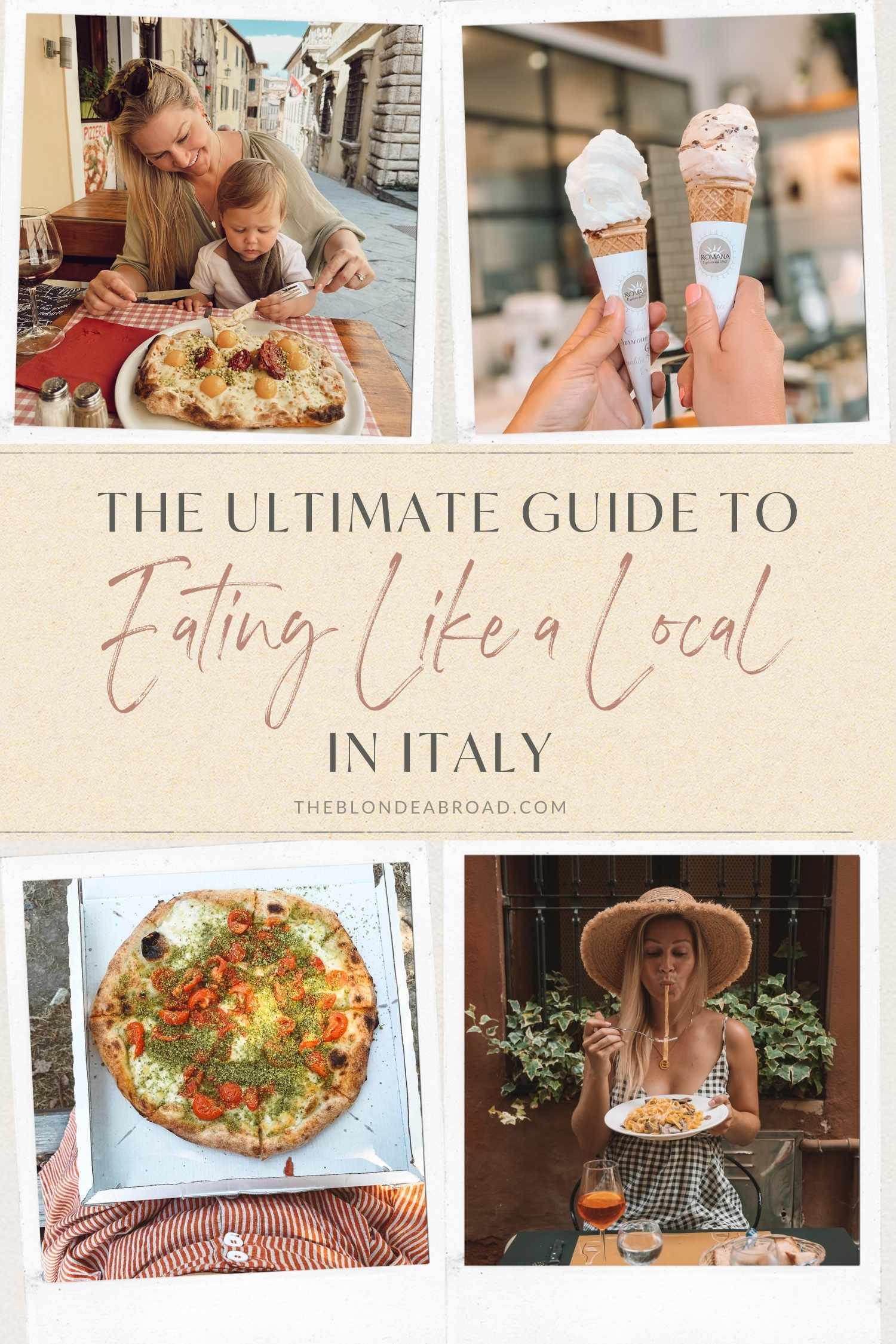
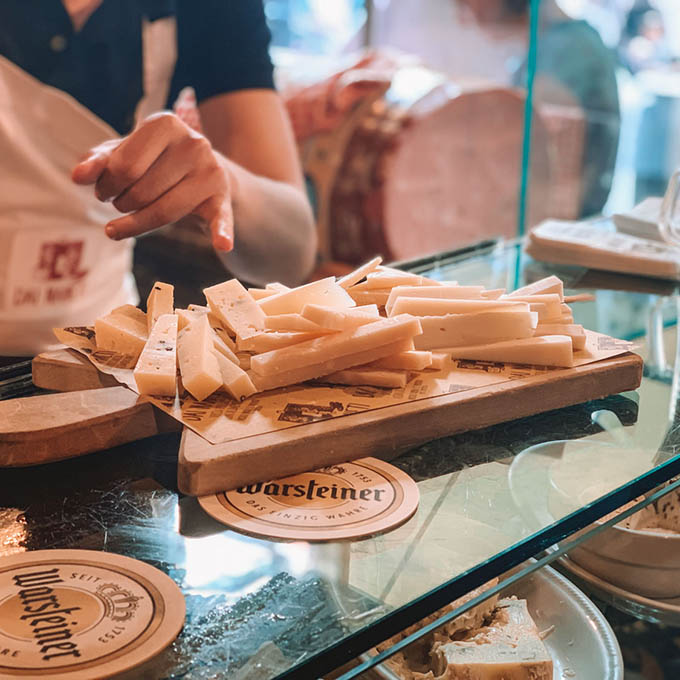
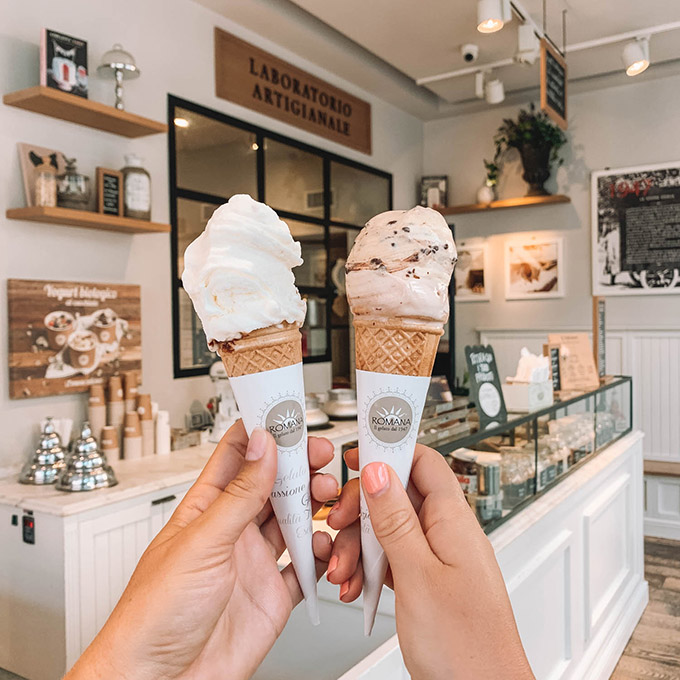
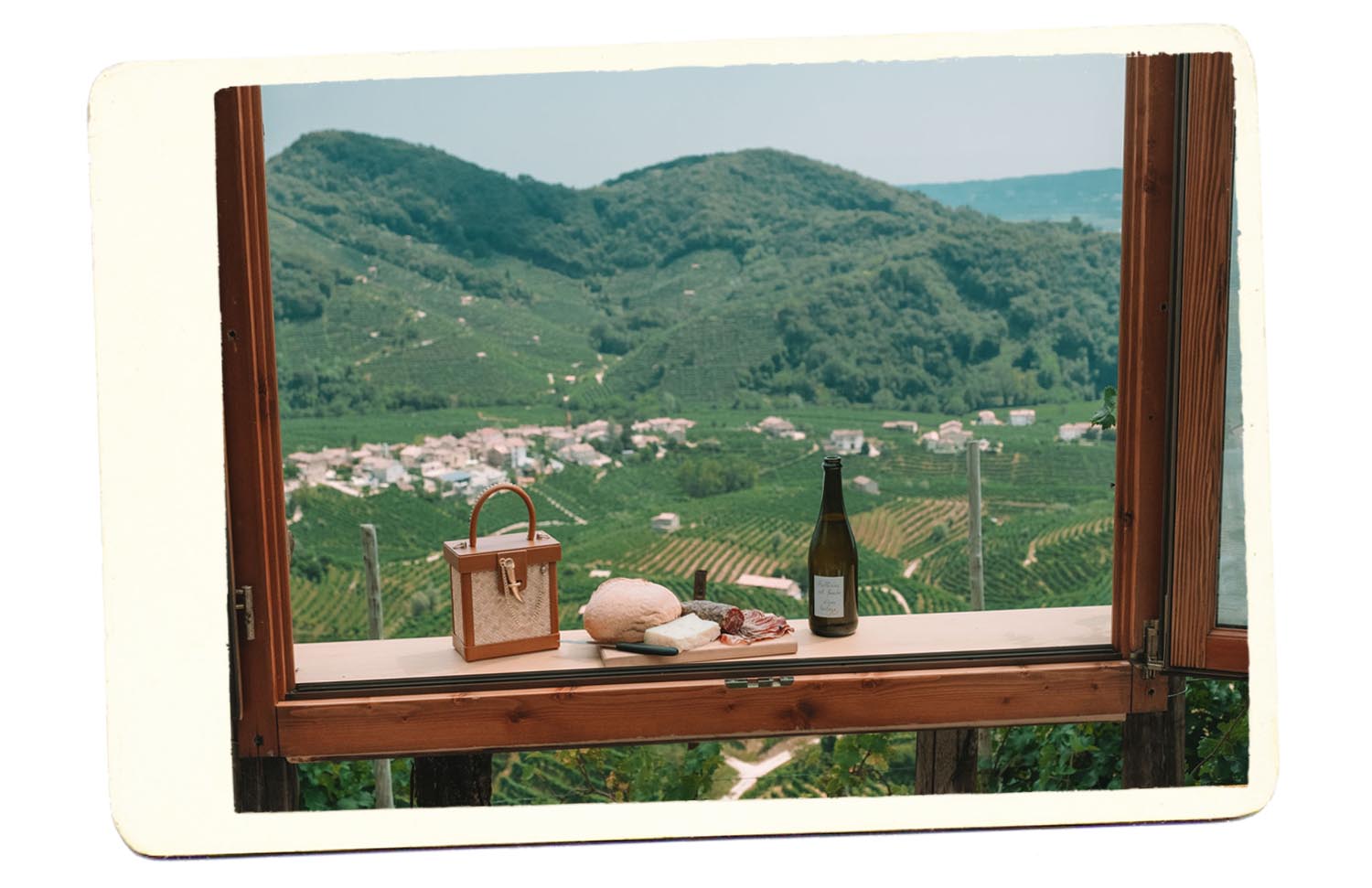
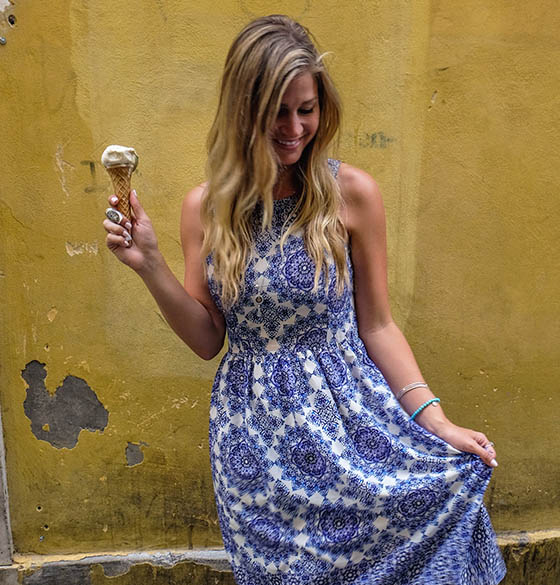

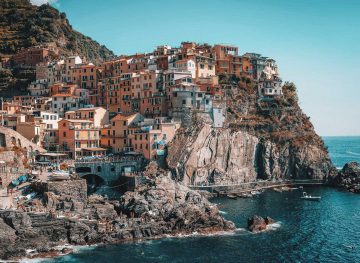

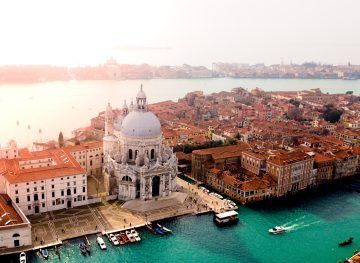

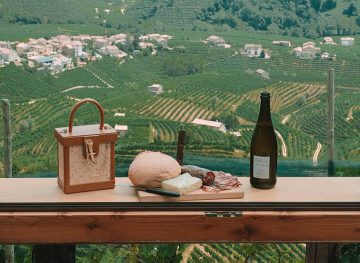




I’ve never seen salad ordered after the secondo, I must say. Also, most meals, Italians don’t eat antipasto + primo + secondo (+ contorno) + dolce, it’s too much (unless it’s a big festive meal, of course). They will order either antipasto + primo, or antipasto + secondo (+ contorno), or primo + secondo (+ contorno), and maybe a dessert afterwards. And interestingly, the cheese platter is often considered either as an antipasto or as a secondo!
Thank you for the notes! My boyfriend lived in Italy for 5 years but definitely could be a regional thing or more for a big festival meal – otherwise that could be quite the filling meal!
WOW!! The pasta the end looks so yummy! And all the experience that seems you had in the journey it’s awesome, I hope maybe I could go to Italy and enjoy the experience of eating real Italian food in front of those beautiful streets with my boyfriend!
I could eat pasta alllllll day! And it was such a cool place to share with my boyfriend. I hope you get to as well!